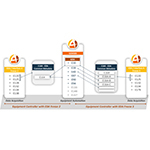The Future of Technology: AI Innovations and Their Impact on Industries
Author: Tech Journalist

As we dive deeper into the digital age, artificial intelligence (AI) continues to reshape the landscape of various industries. From sports to automation and software development, AI is not just a trend but a pivotal component driving innovation and efficiency.
One of the most anticipated events in the sports world is Wimbledon. The Championships in 2025 promise to be the smartest yet, focusing on utilizing AI technologies to engage and win over tennis skeptics. By incorporating advanced AI systems into the tournament, organizers aim to create an enhanced experience for players and spectators alike, enabling a new generation to reconnect with the sport.

Wimbledon 2025: AI Technologies Set to Enhance the Championships Experience.
In the realm of automation, Agileo Automation has announced its future expansion of the A2ECF-SEMI framework to comply with SEMI’s EDA standards. This expansion is set to revolutionize semiconductor manufacturing, addressing the increasing demand for automation in production environments through structured and reliable data.

Agileo Automation’s A2ECF-SEMI framework promises to modernize semiconductor manufacturing.
However, the adoption of such advanced technologies is not uniform across regions. The Mechatronics and Robotics Society of the Philippines (MRSP) highlighted that while there are government efforts to promote Industry 4.0, many manufacturing plants remain static, struggling to embrace the full potential of automation and AI.
Across the globe, OpenAI has made headlines with its recent $200 million contract with the U.S. military, demonstrating the growing reliance on AI in critical national defense functions. This partnership is a testament to the trust placed in AI’s capabilities to enhance operational efficiency and decision-making.
The competition among tech companies is heating up as AI's influence grows, particularly evident in the emerging browser wars. New AI-driven browsers are predicted to change how users interact with the internet, presenting an opportunity for non-traditional tech companies to challenge established giants like Google.
In the context of security, the emergence of Secure Access Service Edge (SASE) solutions becomes increasingly relevant. With the shift toward a remote workforce and cloud-centric operations, SASE provides a seamless security framework that adapts to the modern workplace, ensuring data protection in an ever-evolving threat landscape.

The rise of SASE solutions reflects the changing landscape of enterprise security.
Moreover, the application of AI extends to creative fields as well. The latest advancements have revolutionized how presentations are created, enabling users to design compelling PowerPoint slides using AI tools that streamline the creative process and introduce innovative design elements.
In this fast-paced world, the integration of AI in managing technical debt signifies a new approach to software development. Companies like bet365 are leveraging generative AI to analyze and improve legacy code efficiency, further modernizing their infrastructure.
On a global scale, regions like the Niger Delta are emerging as tech contenders, with local youths driving innovation using AI and blockchain to address pressing local issues. This shift not only highlights the democratization of technology but also emphasizes youth empowerment in shaping the future of their economies.
As we stand on the brink of an AI-driven future, it is essential to recognize both the opportunities and challenges it presents. The ongoing dialogue around AI ethics, potential job displacement, and regulatory frameworks will determine how societies navigate this pivotal transition.
In conclusion, the integration of AI across different sectors is not just revolutionizing industries but also challenging traditional norms. The race to harness AI’s potential will define the competitive landscape of the future, making it crucial for businesses to adapt and innovate continually.